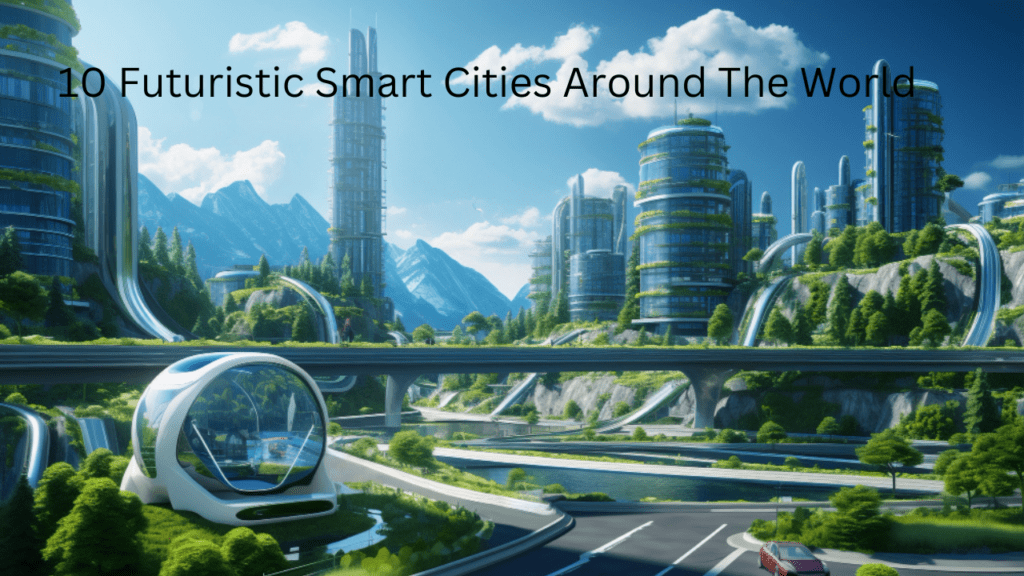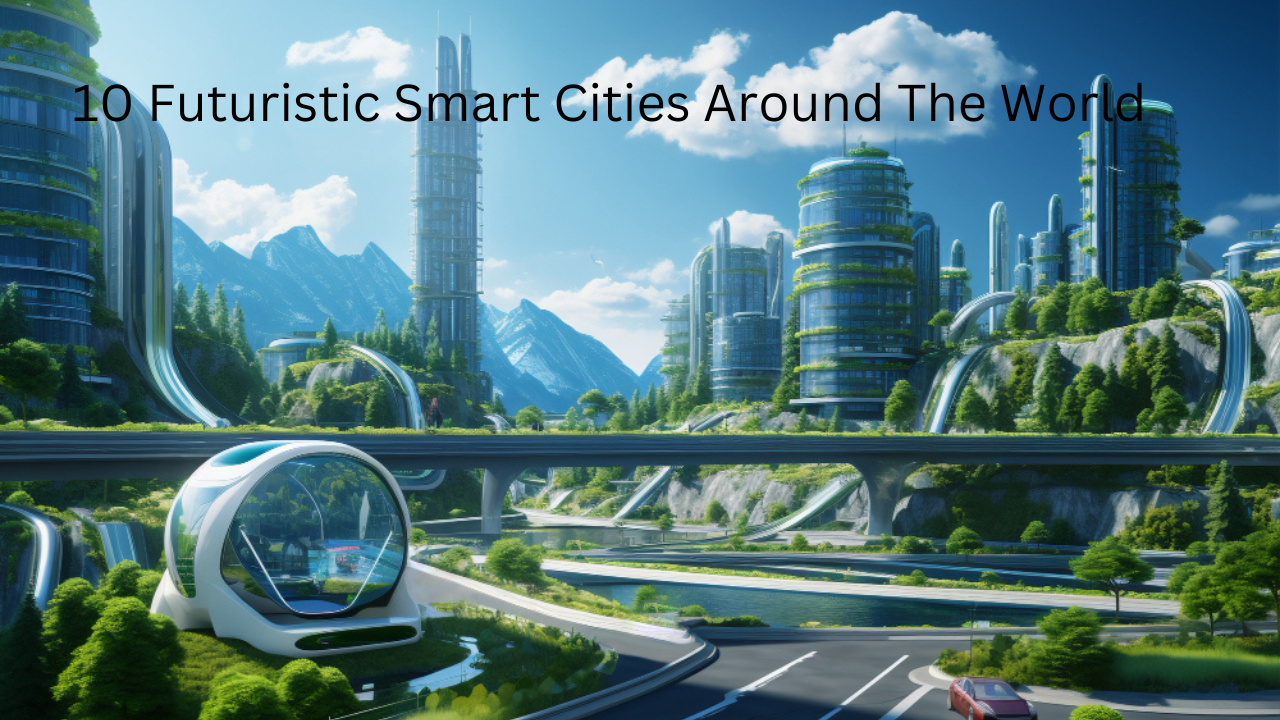10 Futuristic Smart Cities Around The World
What’s up, guys? Welcome to Tecmo! Since the Stone Age, human civilization has come a long way, and there seems to be no turning back now. Instead, we continue to advance in previously unfathomable and unpredictable ways. We might still be interested in the backstory of cobblestone streets in certain lovely old-fashioned cities. We also appreciate neoclassical, ornate, and medieval buildings from all around the world. However, technological innovations continue to emerge, affecting people’s lives. It has also had an impact on numerous industries. For example, consider how technology benefits small enterprises; it affects every part of your life, even the city you reside in.

10. Bangalore, India
India is well known for more than simply its spices. The cradle of early human civilization, it now boasts a futuristic metropolis that is emerging as a technical hub, cultivating local I.T. expertise. Bangalore, officially known as Bengaluru, was formerly a popular tourist and retiree destination. Today, it is one of the world’s fastest-growing cities, evolving into an I.T. hub known as the Silicon Valley of India. This bustling city is home to about 11 million people and has emerged as the principal recruiter of the best graduates from India’s 23 colleges, whose engineering and research follow the MIT and Cambridge models, among others.
Aside from the young talents, young Indian graduates from western colleges who are returning home from all over the world consider Bangalore as a home for their new ideas. Bangalore I.T. Park is well known for more than just tech startups. However, due to the quality of the workforce at a lower cost, it has become the principal outsourcing firms for companies such as LinkedIn and Dell.
9. Brasilia, brazil
The city is well-planned and built from the ground up in the country’s sparsely populated heartland. Brasilia has become world-renowned for its distinctive layout, symmetry of buildings, gorgeous architecture, and open spaces. Thanks to the collaboration of the genius brains of urban planner Lucio Costa and architect Oscar Namir. Meanwhile, the residential and administrative districts of Brasilia resemble an airplane; others believe it resembles a flight of a bird. Brazil’s power hub lies in the government district, which proudly houses the government seat, the Supreme Court, and the National Congress.
The central avenue is known as the monumental access since it houses the most important monuments and ministries. On the other end is Brasilia’s landmark, the TV tower, which stands at 224 meters and is the city’s tallest structure. A market at the base of the building serves popular Brazilian food and music; snack on delectable pastel and caldo did kana, a sugar cane and bakery pastry while listening to samba music. Eco-tourism is also on the rise in Brasilia and Lake Paranoá. It is a popular destination for both residents and international visitors. It is a man-made lake built to give water to the city. You can walk along the beach or take a boat to visit the embassy clubs, restaurants, the University of Brazil, the Olympic Center, and the Palacio d’Alvarado.
8. San Francisco, United States
San Francisco, USA, is renowned as the commercial and financial center of the United States. It is home to Silicon Valley, and the Bay Area houses the majority of the Information Technology and Electronics (ITE) sector. The city continues to attract businesses and entrepreneurs from around the world. Hundreds of tech companies, including giants like Google, Apple, Facebook, and Twitter, have established their headquarters in the expansive innovation district. San Francisco is the preferred platform for tech startups globally, especially appealing to young creative entrepreneurs under the age of 30.
7. Helsinki Finland Finland
It is a small country with a population that accounts for only 0.0 percent of the global population; even so, it has the potential to be among the best in the world. Its capital, Helsinki, was one of the first towns in Europe to pioneer technology benefits for its citizens, such as free and high-speed Wi-Fi that is quicker than your home internet. It is fast enough to support article streaming and video calling. The city is so concerned with your money and identity that the only way to connect to their free internet is to click the accept button after reading a warning that public networks are insecure. Linus Torvalds, the then young computer whiz who invented the Linux operating system when he was 21 years old, was also born in Helsinki with over 3 billion users worldwide. Linux is the most well-known open-source operating system.
6. Tokyo, Japan
Tokyo, Japan, has had the most advanced technology since the beginning of the 21st century and continues to be a futuristic capital. Tokyo’s enticing nightlife captivates travelers with its neon-lit streets. The country’s leading automaker is also working on a completely autonomous electric vehicle; Toyota’s e-pallet pods currently operate at level 4, which implies they require human involvement; however, its long-term goal is to create fully autonomous cars that can run safely on public highways. Without the need for human operators, Tokyo is also known as a nerd haven, attracting creative minds that represent cutting-edge concepts in robotics, telecommunications, and automobiles, among other innovations in the world. Furthermore, these technologies are behind Japan’s ambitions to develop a future smart city on an old manufacturing site near Tokyo. They put new technology to the test, such as robotics and self-driving automobiles powered by hydrogen fuel cells and solar energy.
5. Toronto, Canada
With Toronto, Canada, its superior AI finance technologyToronto. Toronto is also one of the most fantastic and most futuristic cities. It is the heart of Canada’s financial sector and the second largest in North America. Its diversified atmosphere is a source of strength that encourages an innovative mentality. It also makes it easier for new businesses to grow and thrive. The city has the most AI startups and is continually growing, with an 88% growth this year; meanwhile, Toronto’s skyline reflects the city of the future. It portrays the story of numerous historical periods, from its 19th-century buildings to the perplexing modern architecture of the Gary project. Many visitors consider the CN Tower Edge Walk, which was built in the 20th century, to be a must-do experience. Indeed, the city lives up to its official motto “Diversity, Our Strength,” with over 250 nationalities and 170 languages represented in the Toronto region.
4. Singapore
Four Singapore, this little state, roughly the size of New York City, is one of Asia’s fastest-growing urban centers. Migrants from India, Malaysia, China, and Europe transformed this tiny island state from a free trading zone to one of the most advanced nation-states in less than a century. It is an advanced free market economy in a broad network of commercial links, making it one of the world’s busiest ports. Marina Bay in Singapore is the country’s center of all things modern and fashionable. The location of a gleaming skyline of office skyscrapers and some self-driving automobiles is also home to a financial center that controls assets valued at 4.7 trillion dollars as of 2020.
3. Hong Kong china
Hong Kong is known for its well-organized skyline, which offers vibrant perspectives day and night. Take the old tram to the top of Victoria Peak for the most incredible views. Citizens have access to free Wi-Fi, and their public transportation is among the best in the world for accommodating a crowded population. They have several city parks that are open to both residents and visitors; its 22 hectares of science park are both state-of-the-art IT facilities that give support for technology business startups, demonstrating its technological advancement. Hong Kong invests substantially in artificial intelligence (AI) robots. The development of the Internet of Things (IoT) applications and the electronics industry, in addition to being one of the largest data storage hubs in Asia.
2. Moscow, Russia
More than 12 million people live in the nation’s capital. It boasts the largest concentration of billionaires globally and is a notable financial center on the continent. Over time, the 8th-century-old metropolis has become a massive mega-city comparable to Singapore and Monaco. Moscow is a futuristic metropolis because of the Moscow International Business Center, an enormous engineering project. MIBC is commonly referred to as Moscow City because it has the most skyscrapers in Europe. High-rise structures, residential areas, entertainment venues, and retail establishments comprise the 60-hectare region. Its towers have distinctive shapes and hues, and it now has eight of Europe’s top 10 highest structures.
1. Dubai
The United Arab Emirates, specifically Dubai, located in the eastern portion of the Arabian Peninsula, is a renowned tourist destination and an economic hub in West Asia.
It’s known for its skyscrapers and holds the record for the most high-rise buildings of over 1000 feet. Dubai is a futuristic metropolis, focusing on becoming the world leader in blockchain-powered government.
Recognizing the promise of blockchain technology, Dubai aspires to make all city transactions paperless. Furthermore, it intends to use blockchain technology to establish new firms shortly. This cutting-edge technology will make it easier to execute bill payments, visa applications, and license renewals in Dubai.
Dubai is currently hosting World Expo 2020, which began in October and will conclude in March 2022. The global event brings together people from all around the world to generate possibilities and a sustainable future for future generations. That’s it for today, guys. I hope you enjoyed this article.

